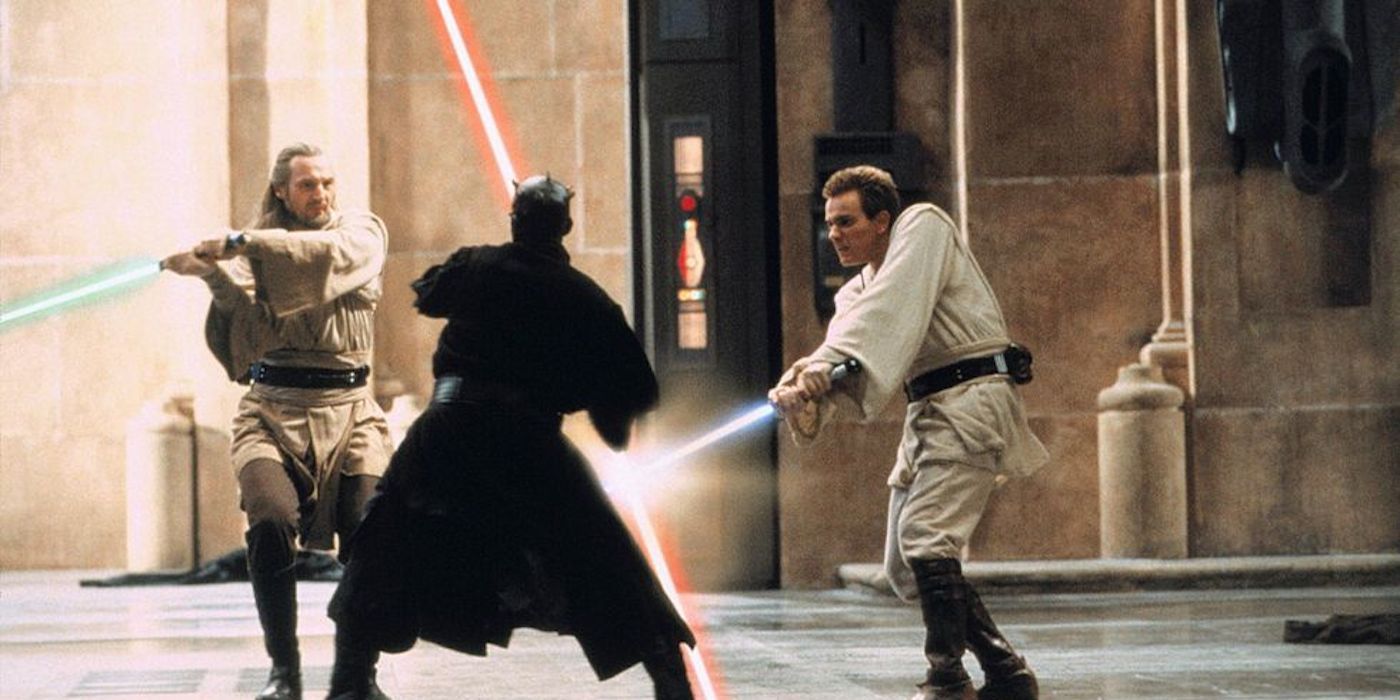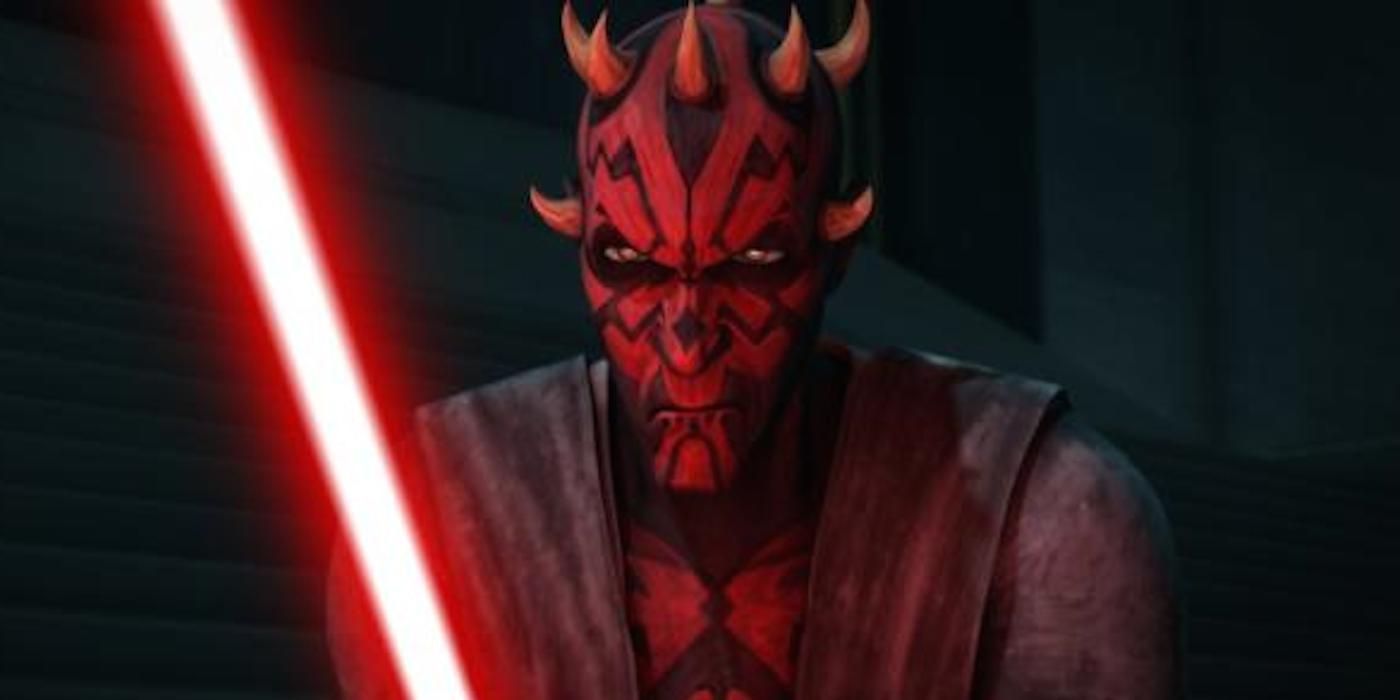Darth Maul is one of the most popular and powerful Star Wars villains, but his biggest weakness is the same as the Skywalker saga's main antagonist, Emperor Palpatine. Best known for his double-bladed lightsaber and distinctive physical appearance, Darth Maul debuted in The Phantom Menace as Palpatine's first Sith apprentice where he famously battled Qui-Gon Jinn and Obi-Wan Kenobi. Although he was seemingly killed off by Kenobi, Maul returned to the franchise in Star Wars: The Clone Wars and subsequently appeared in Star Wars Rebels and Solo: A Star Wars Story.
Like his master, Darth Sidious, better known as Sheev Palpatine, Maul's main weakness was his overconfidence. In Luke Skywalker's confrontation with Palpatine during The Return of the Jedi, he tells the Emperor that his overconfidence is his weakness. That turns out to be true as Palpatine takes too long trying to kill the young Jedi, which gives Darth Vader the opportunity to turn on his master and save his son. The same overconfidence is clear in Darth Maul during his fight with Qui-Gon and Obi-Wan, particularly after he defeats Qui-Gon because rather than putting away the Jedi Padawan quickly using his immense Sith power, he resorts to a drawn-out lightsaber duel with Obi-Wan which he ultimately loses. As such, the two Sith Lords ultimately succumb to the same fatal flaw.
Why Obi-Wan Defeated Darth Maul In The Phantom Menace
The Phantom Menace's final battle surprisingly left Obi-Wan Kenobi as the sole survivor, despite being less experienced at combat than both Qui-Gon Jinn and Darth Maul. In the first half of the battle, Maul defeated Qui-Gon by separating him from Obi-Wan and then outmaneuvering the much older Jedi. Qui-Gon's preferred fighting style, Ataru, requires agility and acrobatics which was difficult in the confined area against his much faster opponent. Despite beating one of Star Wars' most powerful and respected Jedi, Darth Maul's defeat of Qui-Gon led to his undoing because it made him arrogant.
Darth Maul was a powerful force user, as demonstrated in The Clone Wars finale where he single-handedly destroyed an Imperial ship, and in The Phantom Menace when Maul force-pushed Obi-Wan down the reactor pit late into their duel. If Darth Maul wanted to win quickly, he could have used that power much earlier rather than engage in lightsaber combat, but he did anyway because he thought he could easily beat the young Padawan. Even after winning the duel with Kenobi, Darth Maul took time to taunt his opponent rather than finish the job, the same sort of arrogance Palpatine displayed in front of Luke Skywalker. Maul's taunting gave the emotionally fueled Obi-Wan time to use the force to take Qui-Gon's lightsaber and miraculously defeat Darth Maul.
Did Darth Maul Learn From His Defeat?
The Clone Wars revealed that Maul survived being sliced in half by Obi-Wan and revenge was one of his priorities. In their first encounter since The Phantom Menace, Maul and his brother, Savage Opress, easily took Kenobi down in a brief duel in which Maul uses the force to steal the Jedi's lightsaber, suggesting he learned from his previous mistake. But as before, rather than killing Obi-Wan quickly, Maul wanted to bask in his victory and make Kenobi suffer, which gave Obi-Wan the opportunity to escape. In Star Wars Rebels season 3, Darth Maul's overconfidence fails him again as he still believes he can defeat a now more experienced and powerful Obi-Wan in lightsaber combat, and he loses within seconds, proving that he never truly learned from his first defeat to Kenobi in The Phantom Menace.

-(24).jpg)

